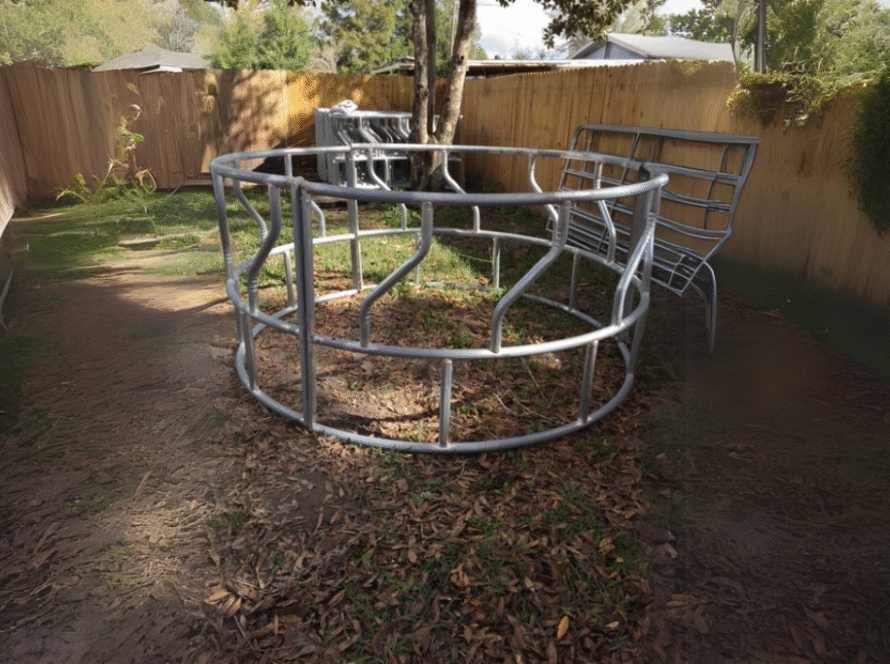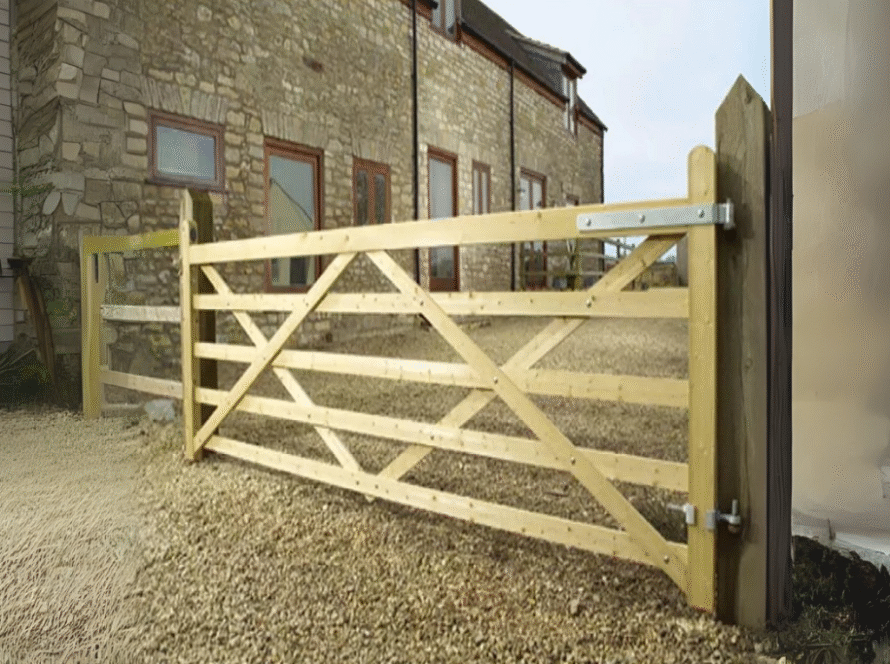Introduction
A squeeze chute is an essential piece of equipment for livestock handling, allowing farmers and ranchers to safely and efficiently work with cattle, goats, and other animals. Whether you’re performing routine health checks, vaccinations, or other veterinary procedures, the right squeeze chute can make all the difference. Not all squeeze chutes are created equal, so understanding the essential features to look for is key to making an informed decision.
When shopping for a squeeze chute, it’s important to consider several factors, including durability, ease of use, safety features, and overall performance. A well-built chute ensures that livestock handling is done safely for both the animals and the handlers. Additionally, a good squeeze chute can help minimize stress for the livestock, making the process smoother and faster.
In this article, we’ll explore the essential features to look for in a high-quality squeeze chute. We’ll cover factors such as construction material, adjustability, safety mechanisms, ease of cleaning, and more. Whether you’re a small farmer or managing a larger operation, this guide will help you choose a squeeze chute that meets your needs and ensures the welfare of your animals.
1. Durability and Construction Material
Why It’s Important:
Durability is one of the most important factors when choosing a squeeze chute. A chute that is made from high-quality, long-lasting materials will withstand the daily wear and tear of livestock handling. It’s crucial for both the longevity of the equipment and the safety of the animals.
What to Look For:
- Heavy-Duty Steel Construction: The best squeeze chutes are made from heavy-duty steel that can resist bending, warping, and corrosion. Look for a chute that uses galvanized steel or powder-coated metal to prevent rust and ensure long-term use.
- Reinforced Framework: Some models feature reinforced frames, which provide additional strength and stability. This is particularly important for handling larger livestock or working in harsher environments.
- Corrosion Resistance: Since squeeze chutes are often exposed to moisture, rust-resistant materials are essential. Check for features like hot-dip galvanization or a durable powder coating that protects the chute from rust and weather conditions.
2. Adjustable Sizing and Versatility
Why It’s Important:
Different breeds and sizes of livestock require different handling specifications. An adjustable squeeze chute offers versatility, making it suitable for a range of animals, from smaller calves to large bulls.
What to Look For:
- Adjustable Sides: A high-quality chute should have adjustable sides that can be widened or narrowed to fit different sizes of livestock. This ensures that animals are securely held, minimizing the risk of injury to both the animals and the handlers.
- Multiple Size Options: Look for a chute that can handle animals of various sizes. If you’re working with a mixed herd, a chute that adjusts easily will save you time and money in the long run.
- Flexible Restraint Mechanisms: Some models offer adjustable headgates or tailgates, allowing you to handle animals of various sizes with ease.
3. Safety Features
Why It’s Important:
Safety is paramount when handling livestock, both for the animal and for the handler. A high-quality squeeze chute should have built-in safety features that prevent accidents and injuries.
What to Look For:
- Locking Mechanisms: Ensure that the squeeze chute has reliable locking mechanisms on the headgate, side panels, and tailgate to secure the animal in place and prevent sudden movements.
- Smooth Edges: Check that all parts of the chute are rounded or smoothly finished to avoid injuring the animal. Sharp edges can cause cuts or discomfort to the livestock, leading to stress or injury.
- Soft, Cushioned Panels: Some chutes have padded or cushioned panels that reduce stress on the animals, making the handling process more humane.
- Anti-Jamming Technology: Look for a chute with anti-jamming systems that prevent the side panels from getting stuck or obstructed, making the process smoother for both the animals and the handlers.
4. Ease of Operation
Why It’s Important:
A squeeze chute should be easy to operate and efficient, reducing the time and energy spent on livestock handling. Operators should be able to quickly and smoothly move the chute into position without hassle.
What to Look For:
- Manual vs. Hydraulic Systems: Hydraulic squeeze chutes offer the advantage of minimal physical effort and precise control, making them ideal for larger operations or when handling difficult animals. Manual squeeze chutes are more affordable but require more physical exertion to adjust.
- One-Person Operation: Look for a chute that can be operated by one person, especially if you work alone. Many modern chutes have simple controls, allowing one person to position and secure the animal without assistance.
- Ease of Adjustments: Whether it’s adjusting the side panels, headgate, or tailgate, the chute should have simple mechanisms for making quick adjustments. This can save you time and ensure a more efficient operation.
5. Cleanliness and Maintenance
Why It’s Important:
A clean chute not only maintains hygiene but also reduces the risk of disease transmission among livestock. In addition, regular maintenance ensures the chute remains in good working condition for years to come.
What to Look For:
- Easy-to-Clean Surfaces: Look for a chute with smooth surfaces that are easy to wipe down and clean. Steel or powder-coated chutes are often easier to clean than wood or uncoated metal models.
- Removable Parts: Some chutes have removable panels or gates that can be taken off for deep cleaning or maintenance. This is particularly useful for ensuring your equipment stays free of dirt, manure, or debris.
- Durability Under Wear: A high-quality squeeze chute should resist wear and tear, even with frequent cleaning. Make sure the construction materials used are resistant to stains and rust to make maintenance easier.
6. Portability and Transport
Why It’s Important:
If your farm or ranch requires mobility, a portable squeeze chute is a must-have. Whether you need to transport it from one location to another or set it up temporarily for a specific task, portability is an important factor to consider.
What to Look For:
- Wheeled Models: Many modern squeeze chutes come with wheels or are designed for easy transport. If you need to move your chute around the farm or take it to different locations, look for a model with wheels or a trailer option.
- Folding Chutes: For added portability, consider a folding squeeze chute that can be disassembled or folded for easy storage or transport when not in use.
7. Additional Features
Why It’s Important:
Beyond the core features, some additional aspects can make a squeeze chute even more effective and comfortable for both the animals and operators.
What to Look For:
- Quiet Operation: Some chutes are designed to operate quietly, which can reduce stress on the animals. The less noise, the more relaxed the animals will be during handling.
- Dual Purpose (Cattle and Smaller Livestock): If you handle both cattle and smaller animals like goats or sheep, consider a model that is versatile enough for different species. Some chutes come with adjustable features or special additions like calf heads to accommodate different types of livestock.
Conclusion
Investing in a high-quality squeeze chute can significantly improve the efficiency, safety, and comfort of your livestock handling. Whether you’re a small farmer or managing a large operation, the right chute ensures both you and your animals are safe during veterinary procedures, routine checks, or any other necessary tasks. When shopping for a squeeze chute, make sure to prioritize durability, safety features, ease of operation, and maintenance. A good chute should last for years and handle various livestock sizes with ease.
By considering these essential features, you can find the perfect squeeze chute to meet your needs, ensuring smoother, safer, and more efficient livestock management for years to come.
FAQs
- What is the difference between a manual and hydraulic squeeze chute? A manual squeeze chute requires physical effort to adjust, while a hydraulic chute uses hydraulic power to adjust the chute with minimal effort, making it easier to use for larger operations.
- How do I clean my squeeze chute? Use a pressure washer or hose to remove dirt and manure from the chute. Wipe down surfaces with a disinfectant or cleaning solution to maintain hygiene.
- Can a squeeze chute be used for both cattle and smaller livestock? Yes, many modern squeeze chutes are adjustable or come with additional features, such as calf heads or narrower openings, to accommodate different sizes of livestock.
- How often should I maintain my squeeze chute? Inspect your chute regularly for wear and tear, and perform maintenance every 6-12 months to ensure it’s in good working condition.
- Are squeeze chutes portable? Many models are designed with portability in mind, featuring wheels or the ability to fold for easy transport and storage.



